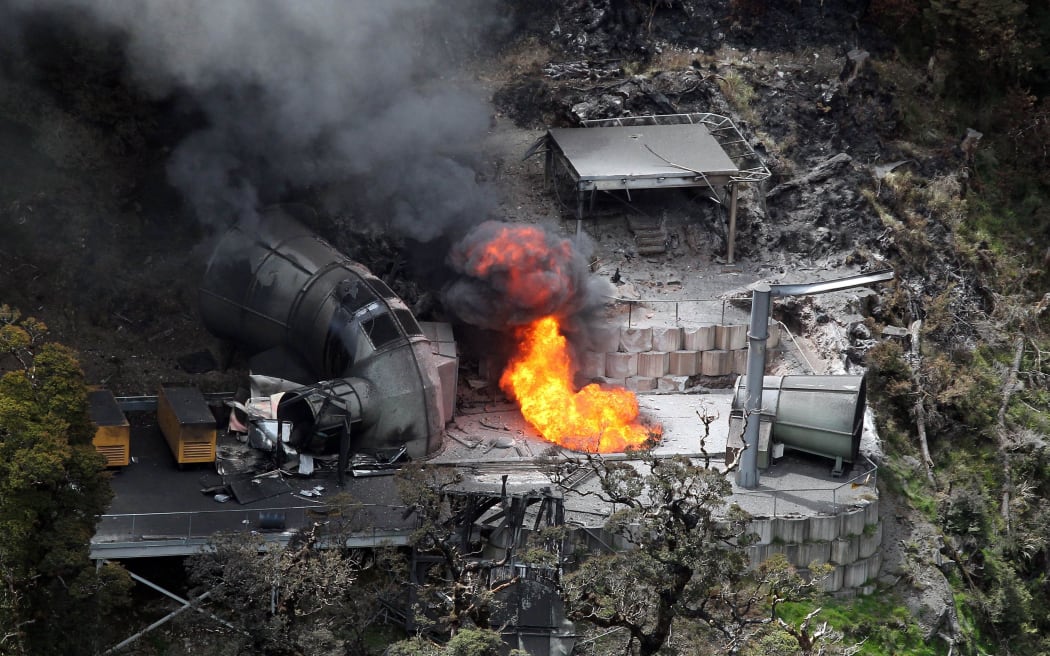Business
New Zealand Workers Face Higher Fatality Rates Than Australia, UK

New Zealand’s workplace safety record has come under scrutiny again, with recent research indicating that workers are more likely to die on the job compared to their counterparts in Australia or the United Kingdom. This alarming finding comes nearly 15 years after the tragic Pike River mine disaster, which resulted in the deaths of 29 men.
Research conducted by the Public Health Communication Centre highlights ongoing issues in New Zealand’s health and safety framework, including inadequate enforcement, insufficient penalties for violations, and a lack of understanding of legal responsibilities among employers and political leaders. According to the study, New Zealand’s workplace fatality rate is now twice as high as that of Australia and four times worse than that of the United Kingdom.
Dr. Christopher Peace, the study’s lead author, expressed concern about the stagnation in progress since the Pike River disaster. “For a country that thinks it cares about people, we are doing disgracefully,” he stated. He noted that more than $5.4 billion was spent in the past year on compensation, retraining, and addressing the psychological impact on families and colleagues affected by workplace fatalities.
The government has recently shifted its approach to workplace health and safety, focusing more on advisory roles rather than enforcement. This change has raised concerns among advocates for stronger regulations, who argue that it undermines the progress made in the wake of the Pike River tragedy. Dr. Peace criticized this approach, stating that effective enforcement is crucial for ensuring safety in high-risk environments.
“Being an advisor really doesn’t get people to understand they are dealing with risks that can lead to serious injury or death,” he added.
Anna Osborne, who lost her husband Milton in the Pike River disaster, expressed her disappointment at the lack of meaningful change in workplace safety regulations. “To find that they are being watered down at the moment by the government makes me sick,” she said. Osborne advocates for stricter penalties, including corporate manslaughter charges, to deter negligence in the workplace.
She, along with fellow advocate Sonya Rockhouse, whose son Ben also died in the mine, is scheduled to meet with the Workplace Relations and Safety Minister Brooke van Velden next week, coinciding with the 15th anniversary of the Pike River disaster. “It’s just not acceptable,” Osborne emphasized. “People should be able to go to work and come home safely.”
Minister van Velden acknowledged that too many people lose their lives at work and has proposed reforms aimed at helping businesses manage critical risks more effectively. “The government wants businesses to focus on the direct results of their actions and identify which actions could cause death or serious injury,” she explained.
Despite the introduction of the Health and Safety at Work Act in 2015, which was modeled on UK legislation, outcomes in New Zealand have not improved significantly. Van Velden noted that there has been no substantial reduction in workplace fatalities since the law’s inception. She remains optimistic that the proposed changes will lead to a decline in fatal incidents.
As the government revisits its regulatory approach, concerns persist regarding the potential for another tragedy similar to the Pike River disaster. Nigel Hampton KC, who represented some of the victims’ families, warned that the nation has not fully learned from the past. “There was no rigidity of a regulator at all, and it was almost non-existent on the Pike River site,” he remarked.
The families of the Pike River victims are now awaiting a decision from the police regarding the possibility of criminal charges related to the men’s deaths, with an announcement expected before Christmas. The ongoing discussions about workplace safety highlight the critical need for rigorous enforcement and accountability in order to prevent further tragedies in New Zealand’s workplaces.
-

 World4 months ago
World4 months agoTest Your Knowledge: Take the Herald’s Afternoon Quiz Today
-

 Sports4 months ago
Sports4 months agoPM Faces Backlash from Fans During Netball Trophy Ceremony
-

 Lifestyle4 months ago
Lifestyle4 months agoDunedin Designers Win Top Award at Hokonui Fashion Event
-

 Sports4 months ago
Sports4 months agoLiam Lawson Launches New Era for Racing Bulls with Strong Start
-

 Lifestyle4 months ago
Lifestyle4 months agoDisney Fan Reveals Dress Code Tips for Park Visitors
-

 World4 months ago
World4 months agoCoalition Forms to Preserve Māori Wards in Hawke’s Bay
-

 Health4 months ago
Health4 months agoWalking Faster Offers Major Health Benefits for Older Adults
-

 Entertainment4 months ago
Entertainment4 months agoExperience the Excitement of ‘Chief of War’ in Oʻahu
-

 Politics4 months ago
Politics4 months agoScots Rally with Humor and Music to Protest Trump’s Visit
-

 Top Stories4 months ago
Top Stories4 months agoUK and India Finalize Trade Deal to Boost Economic Ties
-

 World4 months ago
World4 months agoHuntly Begins Water Pipe Flushing to Resolve Brown Water Issue
-

 Science4 months ago
Science4 months agoNew Interactive Map Reveals Wairarapa Valley’s Geological Secrets









